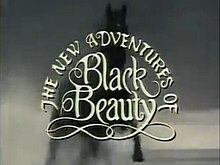Chapter 20: Joe Green
byChapter 20: Joe Green unfolds with a moment that defines a young stable boy’s character in the face of cruelty. Joe stumbles upon a grim scene at Mr. Clay’s brick-yard, where a pair of horses are being viciously whipped by a man with no regard for their suffering. Shocked and overwhelmed by what he sees, Joe doesn’t hesitate. He races off to find Mr. Clay himself, determined to put an end to the abuse. Though visibly shaken, his actions are swift and purposeful. His courage in confronting such cruelty, especially as a boy with little authority, speaks volumes about his compassion and integrity. When he returns with Mr. Clay, the beating is stopped, and the abusive man is called to account for his behavior. Joe, usually quiet and respectful, shows that in moments of moral urgency, even the smallest voice can carry weight.
What makes Joe’s response even more impactful is the recognition he receives afterward. John, the stable’s trusted coachman, commends Joe for acting with courage and conviction. Their discussion emphasizes that standing against cruelty—especially when animals are involved—is never wrong, even if it means confronting adults. This reinforces the story’s message that kindness and moral responsibility should override fear or hesitation. Through Joe’s eyes, readers are reminded that real strength lies in empathy. The affirmation from John strengthens Joe’s confidence and underlines the stable’s culture of respect toward animals. It’s clear that both men and boys in this environment are expected to act with decency, a standard that Joe proudly upholds. This moment also demonstrates how values are passed from one generation to the next—not through orders, but through example and support.
As the matter develops, Joe is invited to provide evidence to the master about the incident. Although nervous at first, he accepts the task with a growing sense of duty. This step transforms him from a witness into an advocate. The story takes care to show that justice doesn’t happen by accident; it requires brave individuals to speak up. Joe’s journey from shocked observer to proud witness marks an important rite of passage in his development. When he’s told that his account could help prevent future harm, Joe stands taller, realizing his role matters. For a young boy, being treated as someone whose words carry meaning is powerful. His pride in this responsibility is not about ego—it’s about understanding that his choices can make a real difference.
The broader impact of this event ripples through the story’s themes. It confirms that speaking out against cruelty isn’t just permitted—it’s expected. The way the household responds, especially Mr. Clay and the master, sends a strong message about the values upheld in this world. It is not enough to care privately; action is required. Joe’s transformation—from hesitant youth to moral agent—reminds readers that courage often begins with discomfort. His actions might not stop every act of harm, but they set a precedent: abuse will not go unnoticed, and justice requires participation. This principle, placed in a child’s hands, becomes even more powerful. Through Joe, the novel instills a sense of shared duty across age and status.
By the end of the chapter, Joe is not only viewed differently by those around him—he sees himself in a new light. He has moved beyond simple stable work into the larger realm of ethical decision-making. His story, though small in scale, resonates with themes that remain universal: the importance of empathy, the courage to act, and the idea that even the youngest members of society hold the power to confront injustice. The lesson here is enduring—true strength doesn’t always look loud or commanding. Sometimes, it’s a trembling voice saying, “Stop,” and meaning it. Joe Green becomes a quiet hero, not because he was fearless, but because he refused to ignore what he knew was wrong.

